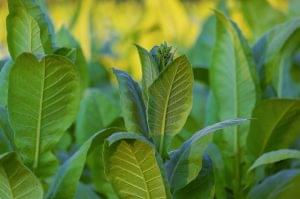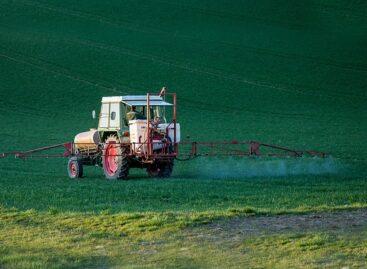The size of the production area in the domestic tobacco sector has stabilized
The actors of the sector threw themselves into this year’s work with confidence, the spring precipitation in most of the growing area was good for the plants at the beginning, but the plantations were also badly damaged by the downpours, ice storms and the summer drought. According to the National Chamber of Agrarian Economy and the National Association of Hungarian Tobacco Growers, it is cause for hope that the reduction in the area under cultivation has finally stopped.

The tobacco farmers prepared for this season with optimistic expectations. The planted areas showed a particularly favorable picture in the spring, the seedlings emerged well. Thanks to the heavy rainfall in June, the plants felt good, but due to the abundant water supply, they developed a modest root mass, which is why the sudden onset of heat later took a toll on the plantations. Some areas became flooded, which was also not favorable for the herd. As the drought worsened, plant growth stalled and forced ripening occurred. The farmers had to literally run a race against time, because in such conditions the quality and quantity of the crop could weaken day by day.
The hot summer not only brought the harvest forward in the orchards, but also the breaking of tobacco started weeks before the usual period this year. According to the overview of the National Chamber of Agriculture and the National Association of Hungarian Tobacco Growers, when taking delivery of the delivered tobacco, it appears that the crops in non-irrigated areas were more seriously affected by the summer heat than the irrigated stands, so the market participants expect a medium average yield for the time being as an average of the two types of areas. This situation clearly shows that, not only in tobacco, but also in other cultures, the importance of irrigation in establishing more stable production conditions cannot be overemphasized. The acquisition of tobacco is currently ongoing, the producers are expected to be able to hand over Virginia by the end of November, and then the acquisition of Burley can also start in December.
The area reduction that has been going on for many years seems to finally stop and stabilize around 2,800 hectares, thanks to the perseverance of the farmers, the maintenance of subsidies, and the increase in purchase prices. Based on our expectations, the update of the base rights will also live up to expectations, and after the reorganization, active farmers will be able to continue production under predictable conditions.
Related news
NAK: Despite the bird flu epidemic, there will be no shortage of goose liver
🎧 Hallgasd a cikket: Lejátszás Szünet Folytatás Leállítás Nyelv: Auto…
Read more >Newer plant protection products are available for small-scale cultivation
🎧 Hallgasd a cikket: Lejátszás Szünet Folytatás Leállítás Nyelv: Auto…
Read more >Campaign about the sustainability of meat consumption
🎧 Hallgasd a cikket: Lejátszás Szünet Folytatás Leállítás Nyelv: Auto…
Read more >Related news
Premium drink, premium literature
🎧 Hallgasd a cikket: Lejátszás Szünet Folytatás Leállítás Nyelv: Auto…
Read more >Responsible Gastro Hero Foundation: a sourdough and kombucha sharing campaign
🎧 Hallgasd a cikket: Lejátszás Szünet Folytatás Leállítás Nyelv: Auto…
Read more >Style, language and tools
🎧 Hallgasd a cikket: Lejátszás Szünet Folytatás Leállítás Nyelv: Auto…
Read more >







